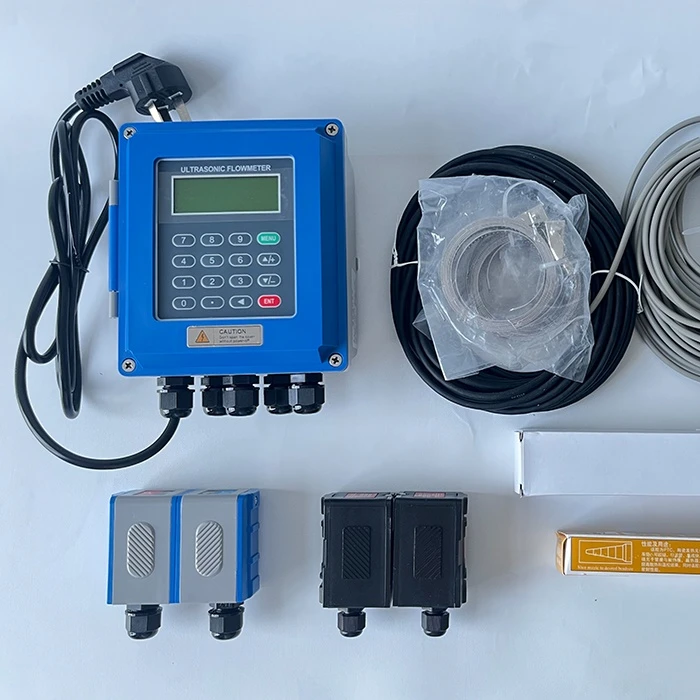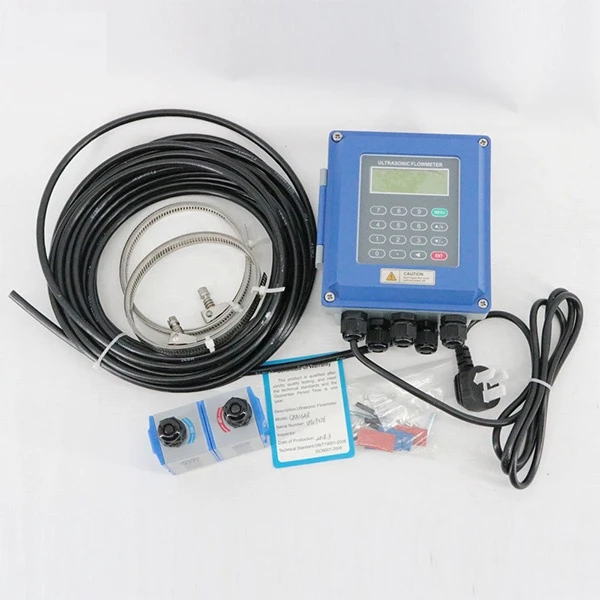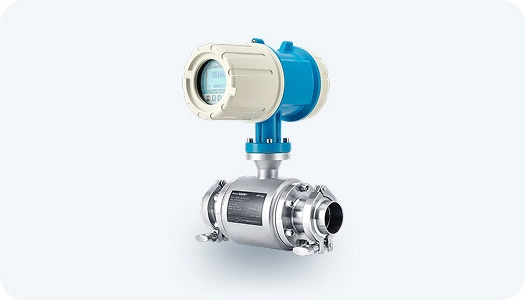-
Date:2025-11-18
-
Page View:9
Traditional flowmeters often require cutting the pipe or making direct contact with the fluid, which makes installation complex and can lead to measurement errors caused by corrosion, wear, or contamination. The emergence of the ultrasonic clamp-on flowmeter, with its unique non-contact measurement principle, has brought a revolutionary breakthrough to flow monitoring. By mounting sensors on the outside of the pipe—without touching the fluid at all—it can accurately capture flow dynamics, making it an ideal choice for applications in chemical processing, water supply, and environmental protection.
The Technology Behind Non-Contact Measurement
The core of an ultrasonic clamp-on flowmeter lies in using the propagation characteristics of ultrasonic waves in a flowing medium to calculate flow rate. It typically works based on two main technologies: the transit-time method and the Doppler method.
Transit-Time Method
The transit-time method calculates flow velocity by measuring the difference in travel time of ultrasonic signals moving upstream and downstream in the pipe.
When the sound wave travels with the flow, its speed increases and travel time decreases.
When it travels against the flow, its speed decreases and travel time increases.
By accurately computing the time difference in both directions and combining it with the pipe’s cross-sectional area, the flowmeter can determine the fluid’s flow rate.
This method provides high accuracy, especially for clean liquids such as purified water or industrial cooling water.
Doppler Method
The Doppler method is designed for fluids that contain suspended solids or air bubbles. When ultrasonic waves hit moving particles, the reflected signal experiences a frequency shift. The magnitude of this shift is proportional to the fluid’s flow velocity.
By analyzing the frequency change, the device indirectly calculates the flow rate.
This method is suitable for wastewater, sludge, and other complex fluids, but it requires a sufficient amount of reflective particles to ensure reliable signal strength.
Key Advantages of the Non-Contact Design
The greatest breakthrough of the ultrasonic clamp-on flowmeter lies in its fully non-contact measurement method. The sensor is mounted on the outside of the pipe using a special coupling agent, allowing ultrasonic signals to penetrate the pipe wall and measure the fluid without ever contacting the medium directly. This design offers multiple advantages:
1. Easy Installation
Traditional flowmeters often require cutting the pipe or halting production for installation. Clamp-on devices only need to be fixed to the pipe’s exterior, eliminating the need to interrupt operations or modify piping. For large pipelines or buried lines, this “external attachment” installation significantly shortens the construction time and reduces modification costs. For example, in water supply monitoring, technicians can deploy the equipment in just a few hours without shutting valves or draining the pipe.
2. Medium Compatibility
Since the sensor is isolated from the fluid, the device can handle corrosive, high-temperature, or high-pressure media. In the chemical industry, clamp-on flowmeters can continuously monitor corrosive fluids like acids, bases, and organic solvents, avoiding measurement failures caused by electrode corrosion in traditional flowmeters. They also cover a wide temperature range, from low temperatures up to 180°C, meeting diverse operational needs.
3. System Reliability
The non-contact design eliminates direct wear from the medium, greatly extending equipment lifespan. Traditional mechanical flowmeters require frequent maintenance due to issues like impeller jamming or bearing wear. Clamp-on devices have no moving parts, reducing failure rates and extending maintenance intervals to over five years. Additionally, they are highly resistant to interference and operate stably in complex industrial electromagnetic environments.
4. Environmental and Safety Benefits
In industries with strict hygiene requirements, such as food and pharmaceuticals, clamp-on flowmeters prevent contamination risks associated with traditional equipment. Their non-intrusive design also reduces safety hazards from potential pipeline leaks, making them especially suitable for monitoring flammable or explosive media.

ultrasonic clamp-on flowmeter

ultrasonic liquid flow meter
Installation Guidelines and Operational Tips
To ensure accurate measurements, the installation of ultrasonic clamp-on flowmeters must follow strict guidelines:
1. Pipeline Requirements
Straight pipe length: Maintain a straight section of 10D upstream and 5D downstream of the sensor to eliminate vortex interference. For elbows, valves, or other flow disturbances, increase the straight section length or use a flow conditioner.
Pipe material and wall thickness: The device is compatible with metal, plastic, and other pipe materials, but accurate wall thickness measurements are required to correct the ultrasonic path. For lined pipes, the lining thickness must be entered.
Surface preparation: Clean the pipe exterior of paint, rust, or oil before installation to ensure tight sensor contact with the pipe wall and avoid air bubbles or debris that could affect signal transmission.
2. Sensor Positioning and Mounting
V-method and Z-method: The V-method is suitable for small-diameter pipes (DN15–DN300) with sensors aligned horizontally. The Z-method is for large-diameter pipes (DN200+) or fluids with suspended particles, allowing direct ultrasonic transmission to reduce signal attenuation.
Coupling agent: Apply a dedicated ultrasonic coupling agent between the sensor and the pipe wall to enhance signal penetration. Ensure the coupling agent fully covers the installation area and avoid trapped air bubbles.
3. Parameter Settings and Calibration
Pipeline parameters: Accurately input pipe diameter, material, wall thickness, and fluid type (e.g., water, wastewater, oil).
On-site calibration: After initial installation or pipe replacement, perform field calibration using a standard flow source (e.g., portable ultrasonic flowmeter or volumetric calibration device) to ensure measurement accuracy.










